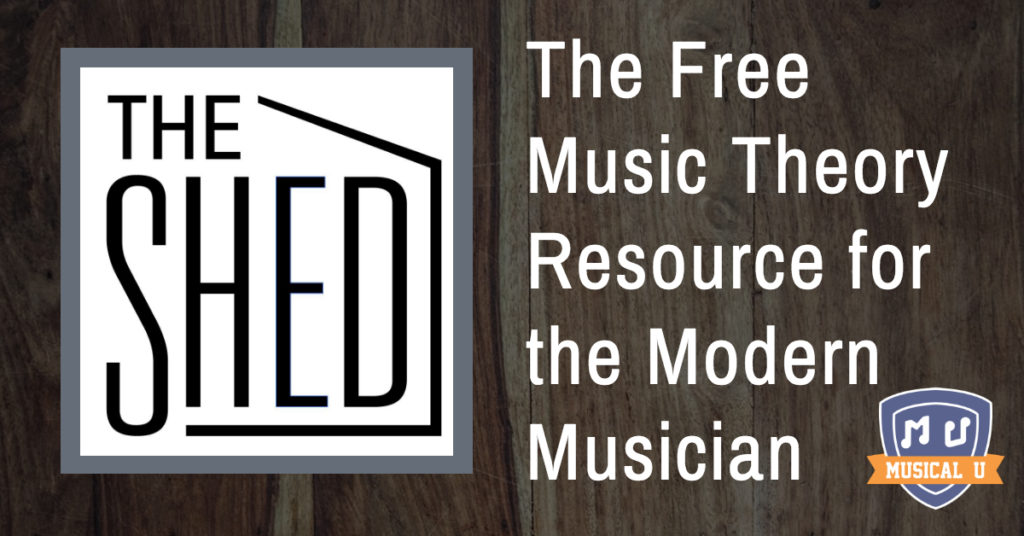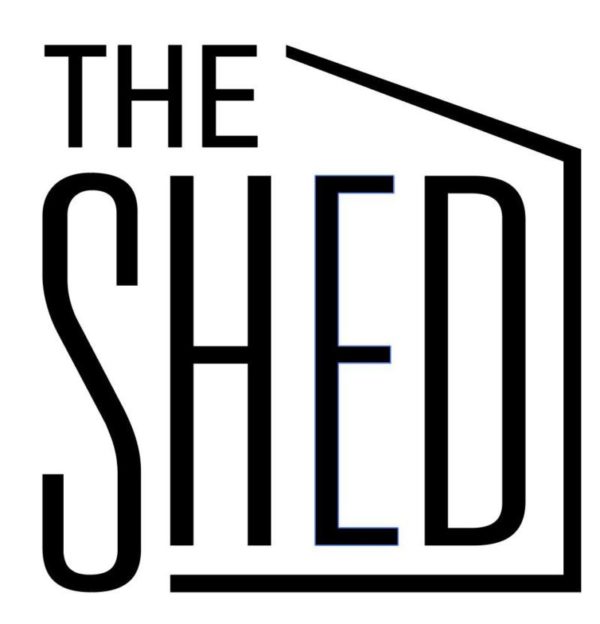Years ago, aspiring young jazz musicians living with big families on small rural homesteads resorted to practicing their instruments in the woodshed. Thus, in jazz lingo, The Shed became synonymous with the practice room.
The Virtual Woodshed
ShedTheMusic.com, aka The Shed, began as a tool to enforce the most common music theory concepts in our high school classroom. “Go to The Shed” has become a mantra that pushes our students to be self-guided learners – which is our primary goal as teachers. This has created a culture of independent musicianship and camaraderie in our music department that is continually growing our students’ involvement, ability, and passion. Once our students have been to The Shed, we can use rehearsals to tackle higher level concepts.
Is The Shed for me?
The Shed has evolved beyond our high school into an outlet for all independent music learners to regain understanding, to fill in knowledge gaps, and to expand on their own.
The Shed starts at the most basic level and advances to improvisation and transcription. The curriculum, if you can call it that, isn’t classical theory: it was created with the modern musician in mind.
If you want to know how to realize figured bass and argue about improper use of parallel fifths, this is not the website for you.
Instead, resources like the tabs in the harmony section take a student all the way from learning what intervals are to being able to write chord progressions using secondary functions. This is just one example of the wide breadth of our ever growing content.
What’s in the woodpile?
The site has four major categories – Harmony, Melody, Rhythm, and Jazz – which are each broken down into important fundamental concepts. And each concept has a document and/or a concise video explaining it.
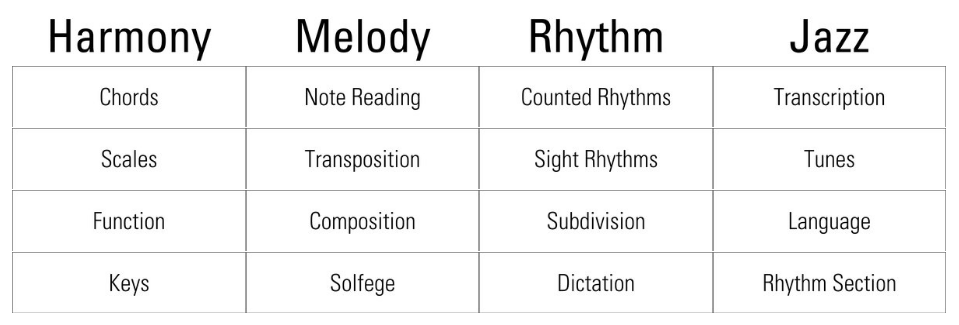
Harmony
The harmony section highlights our “theory for the modern musician” approach. There are fun raps to learn traditionally dry topics like the circle of fourths and the order of thirds. The chords page seamlessly transitions from intervals to triads, to seventh chords with easy to understand explanations, and the functions page explains the rules for chord progressions and how to use them for composition or analysis.
Melody
The melody section helps students with reading notes, transposing, learning rules for writing melodies, and using solfège. Solfège is the most important tool to improve aural skills, so we have solfège call and response videos that help students with “earing out” chord changes. You don’t have to be a singer to benefit from learning this system!
Rhythm
In the rhythm section, we have a traditional guide – called counted rhythms – which breaks down how to count rhythms in a clear and structured manner. The Shed offers an additional method called sight rhythms. Students memorize what rhythms look and sound like instead of having to count them out. When you read the word “cat” you don’t have to sound it out; you see the word and know instantly what it is. The sight rhythm method brings students to that point of literacy.
There is also a subdivision page that offers workout videos to get better at feeling different subdivisions, and a dictation page that gives two-measure rhythmic spoken-word recordings to practice your retention and comprehension.
Jazz
The jazz section has a language tab with licks from transcribed solos and stock licks that everyone should know. There is also a section on jazz articulation to practice common jazz rhythms with play-along tracks. Practicing these will add more style to a student’s ensemble and solo playing.
Another unique feature of our jazz section is a groundbreaking method for transcription that we use for learning tunes and transcribing solos.
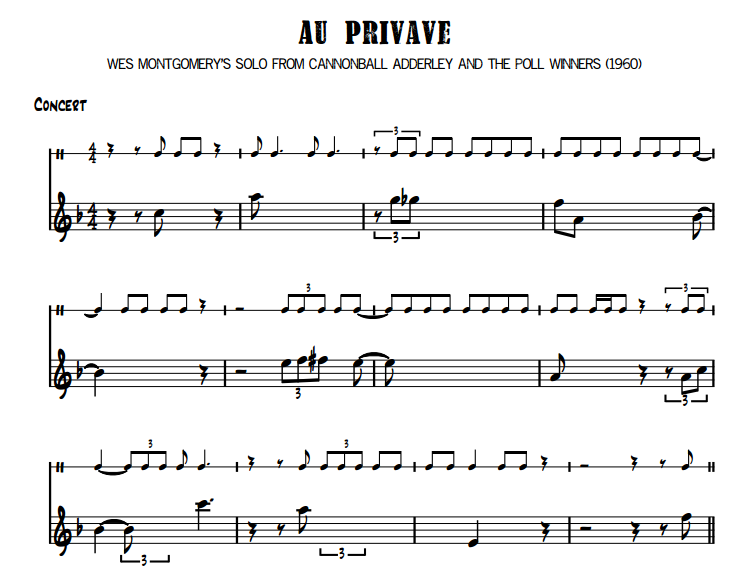
For any given selection we provide a staff with the rhythm written above and some important notes filled in. You complete the rest of the notes in the staff to finish the transcription. This method provides you with more success and confidence when transcribing.
There is also a page dedicated to the jazz rhythm section which is separated into guitar, bass, drums, and piano. The goal is to give a solid foundation to learning these instruments and playing them in a jazz group. The guitar section has a sequential set of chord voicings that start with simple Freddie Greene shapes and move all the way to full Wes Montgomery-style drop-2 voicings.
What else can I use to sharpen my ax?
The resources in The Shed keep on growing. Here are more areas to explore:
How-to Guides
How-to guides tackle common problems in music that are explained using materials from the website. An example is “How to write a jazz étude” where we give three different methods to write a jazz étude using our transcribed licks. “How to write your own licks” teaches how to use digital patterns and arpeggios along with the four types of bebop ornamentation to create solo licks. The how-to guide section is always expanding as we find new ways to use The Shed.
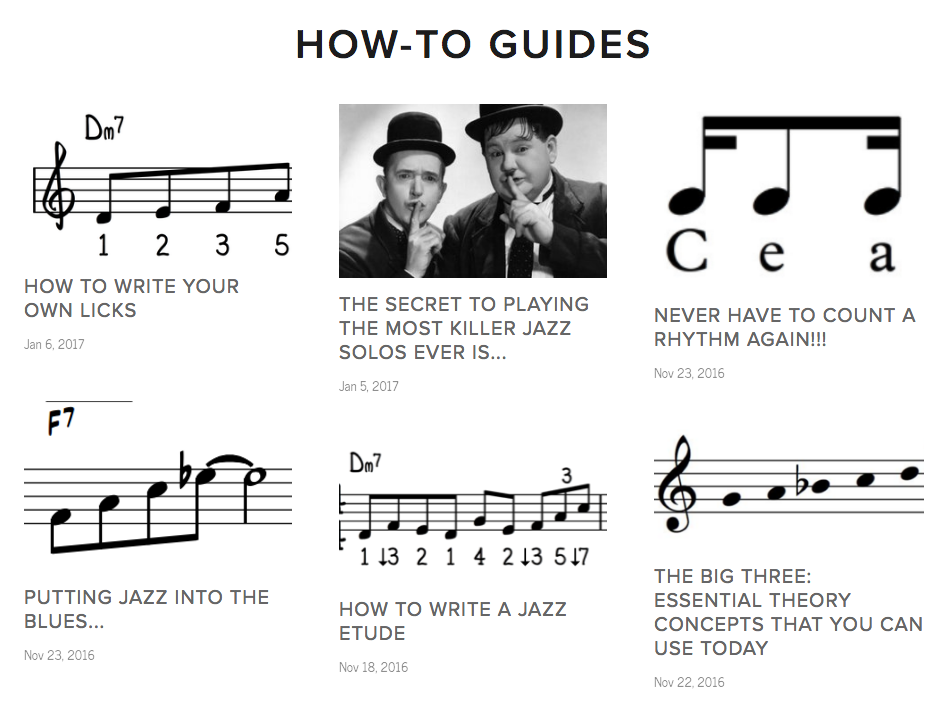
Harmonic Control
Harmonic Control is a free class that teaches you how to apply music theory on your instrument and to gain control of your ear. A weekly challenge is posted every Sunday. The challenges take different forms such as recording video or audio samples or posting written assignments. Anyone can join the class at any time and complete the previous weeks’ challenges at their own pace.
Artist Spotlight
Artist Spotlight is a series of video interviews of notable musicians and educators that we’ve recorded at concerts and conventions. We ask for their insight on learning, and they give tips on what you can do to improve your playing.
You ask and we answer
The Q & A page has a simple form for you to fill out and submit questions you have about music theory. We record video answers and post them to our Q & A blog for everyone to see.
Because it has been so successful in engaging and challenging our students, we are turning The Shed into an open source music education revolution! We invite teachers, students, and anyone else who is interested in improving their skills at any level to utilize The Shed. You can join the community through social media and contribute to our catalog by sending us your ideas and questions through email or via the Q&A page. Click around and have fun becoming a better musician. We’ll see you in The Shed!

